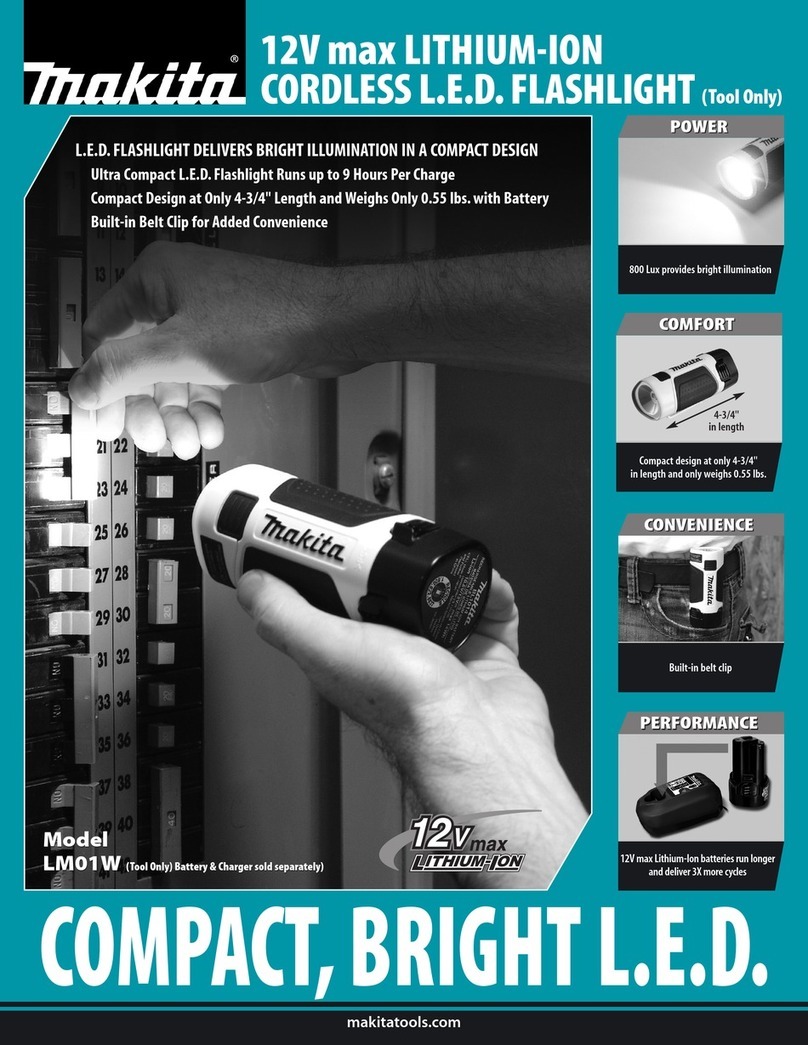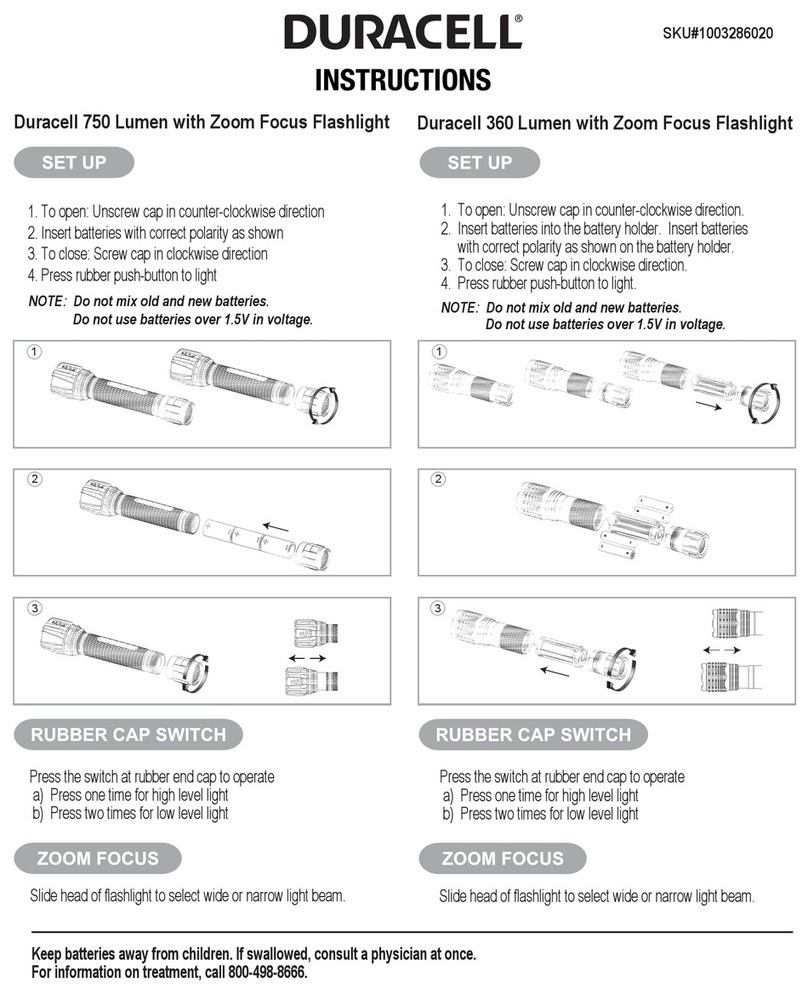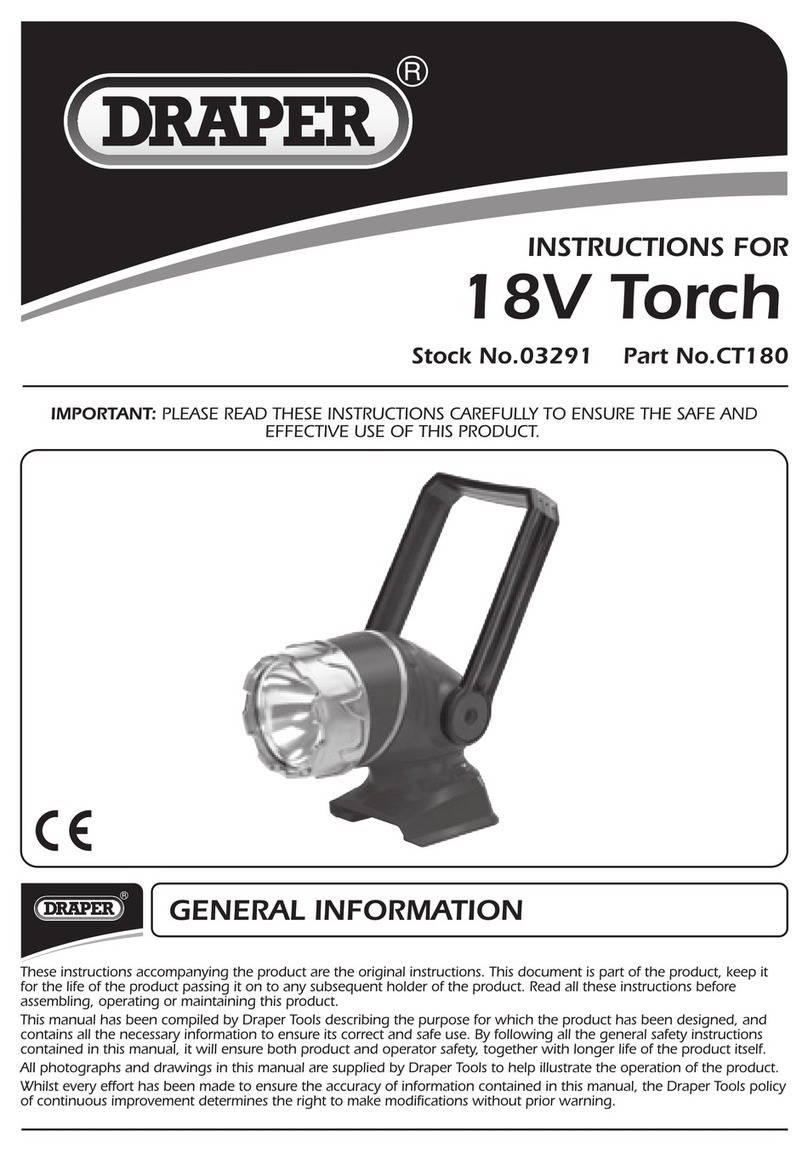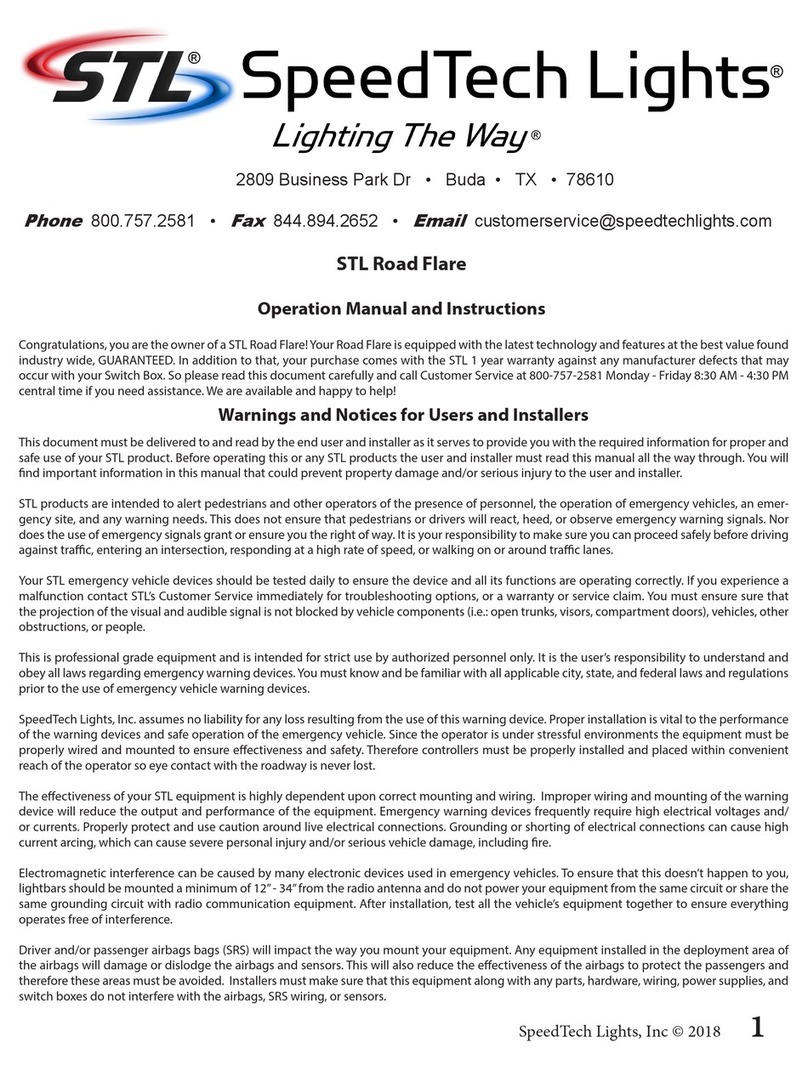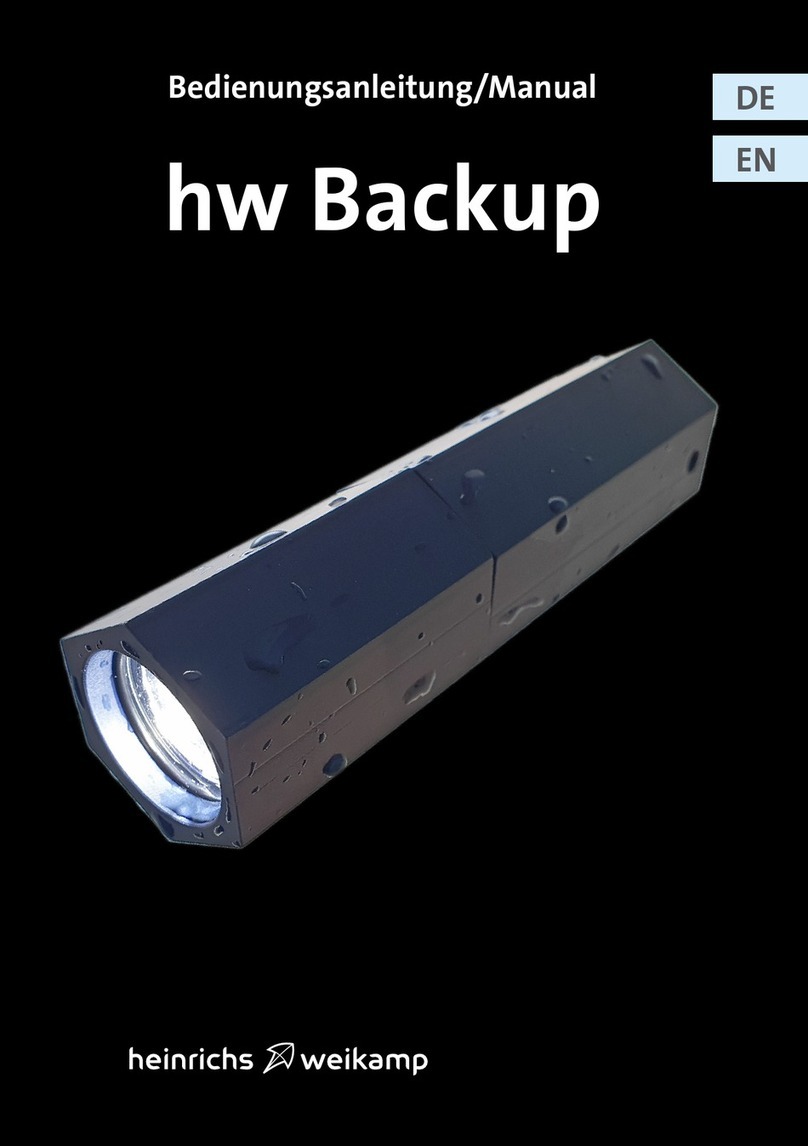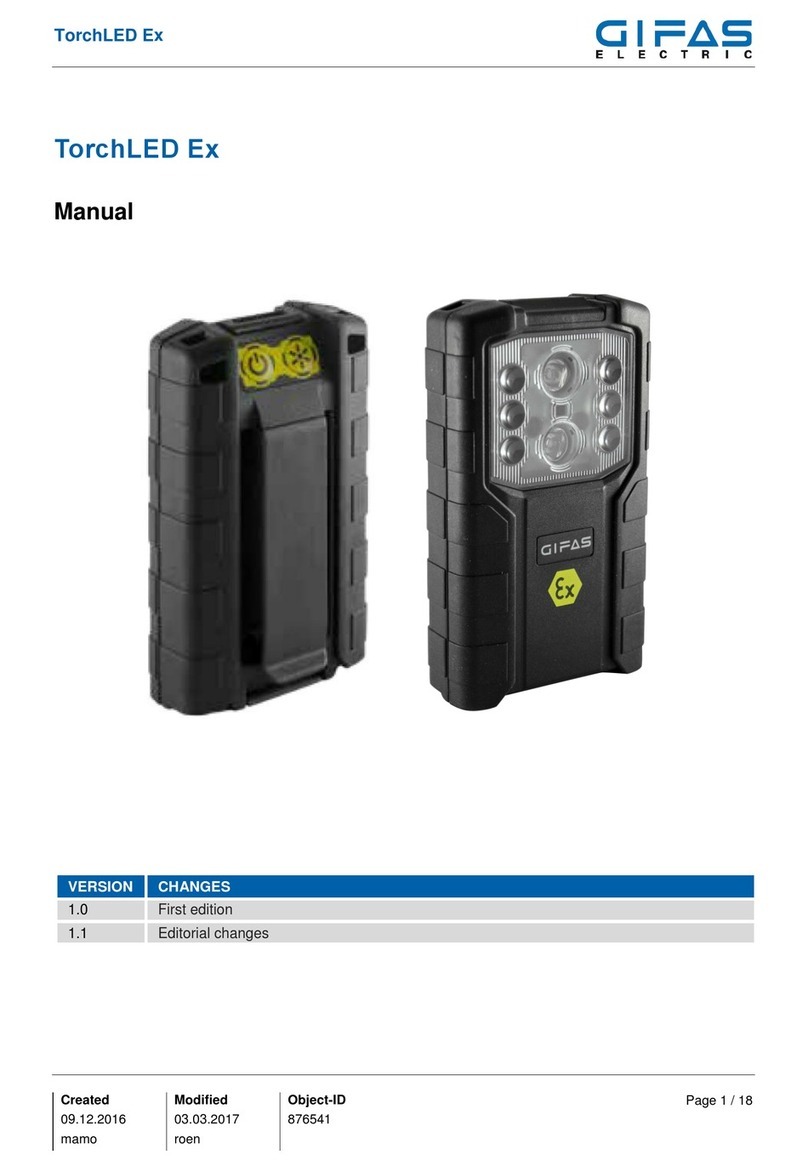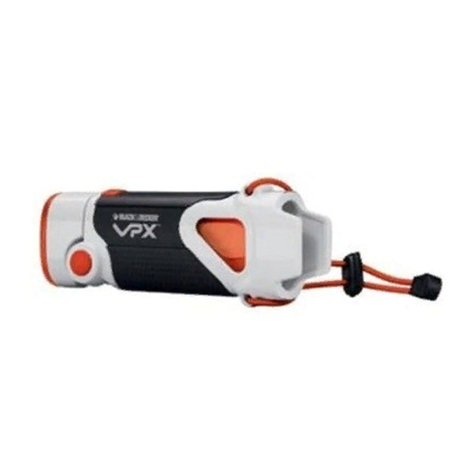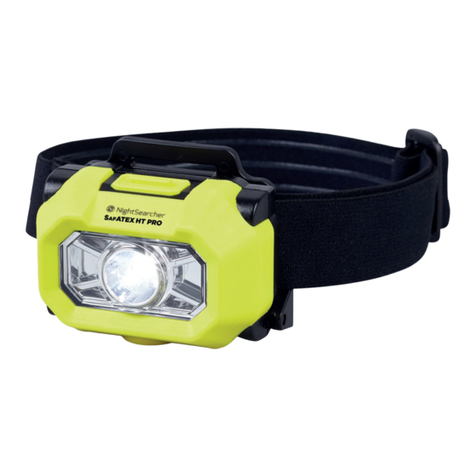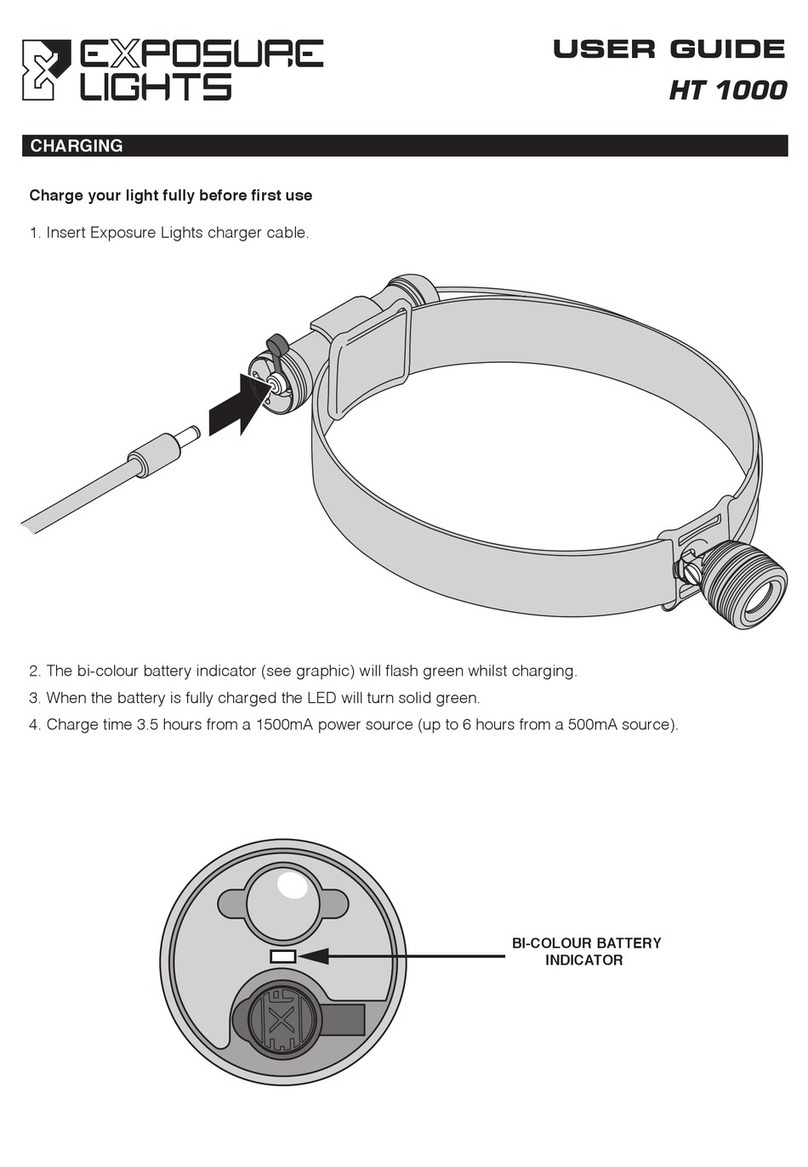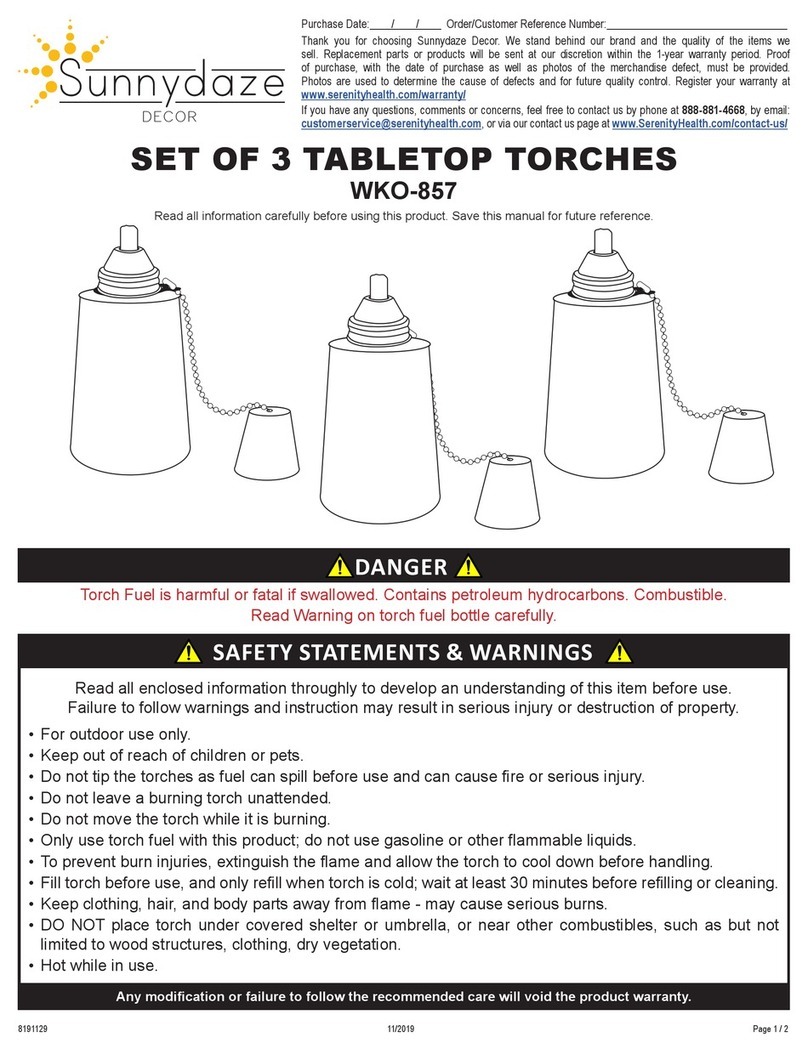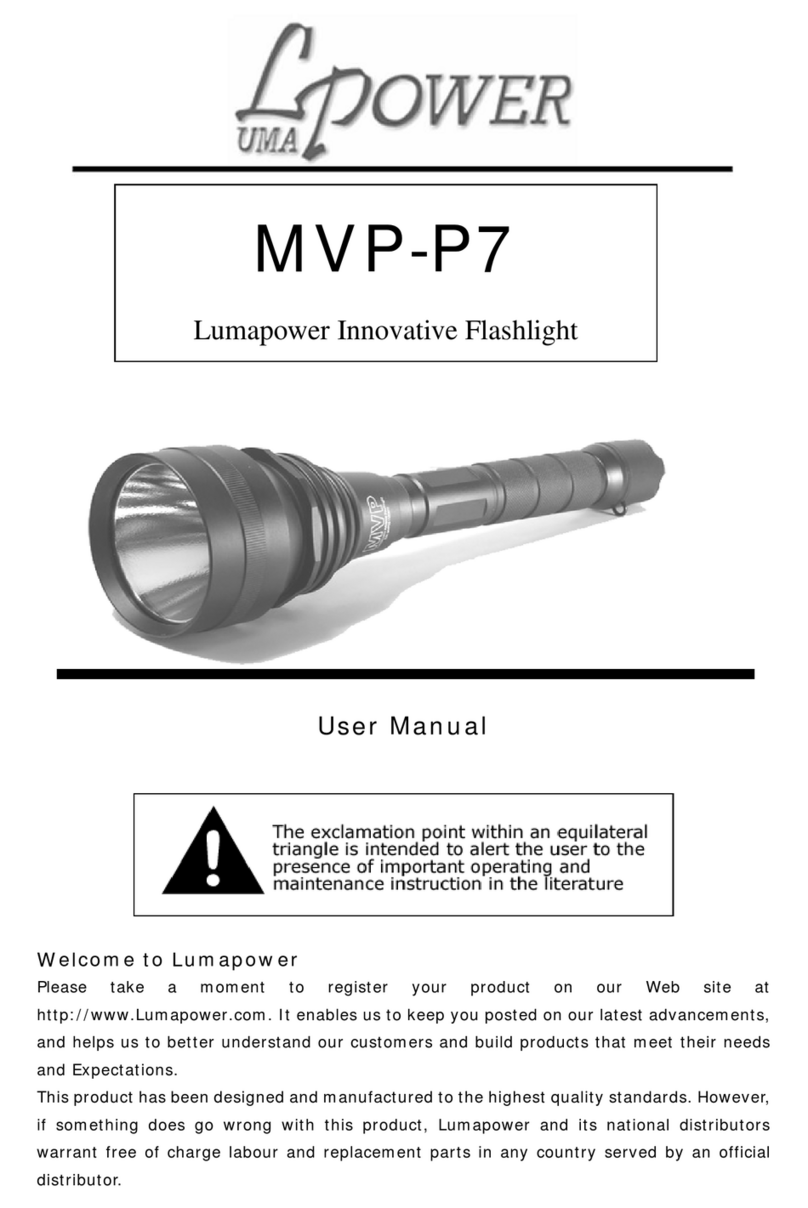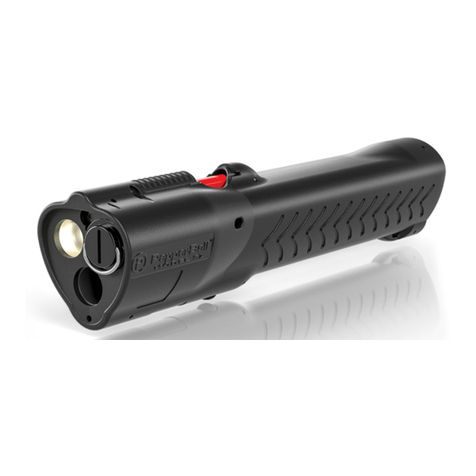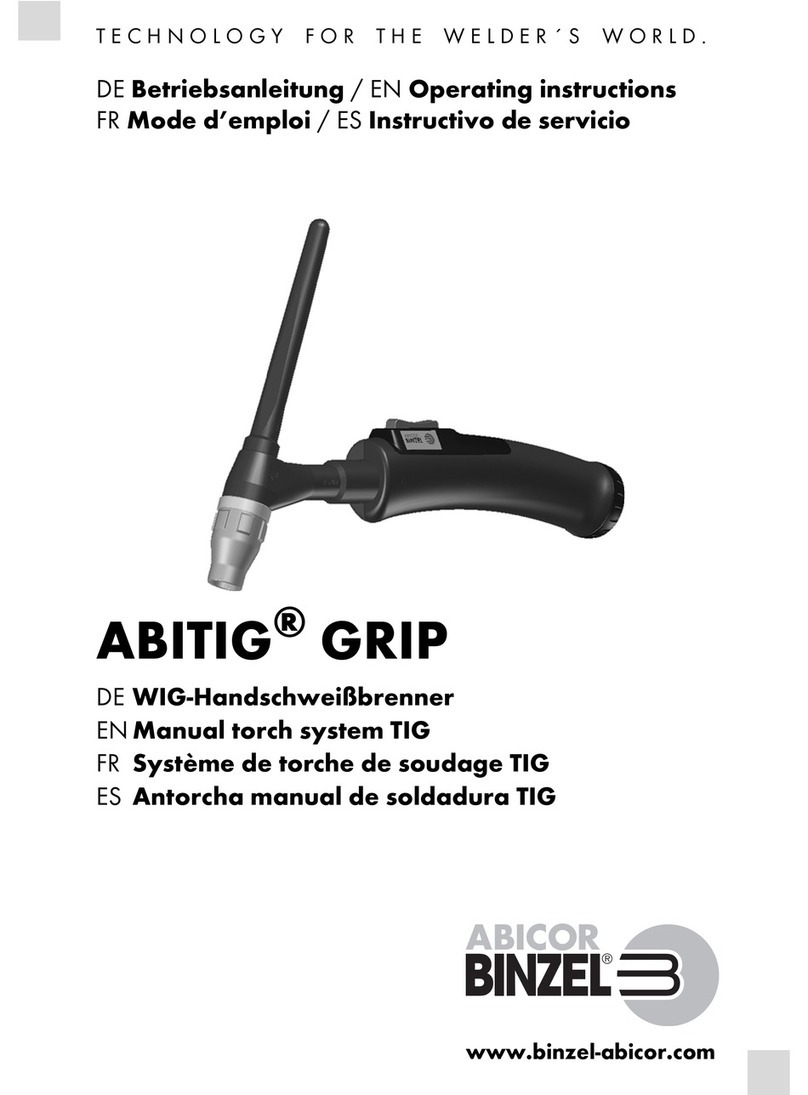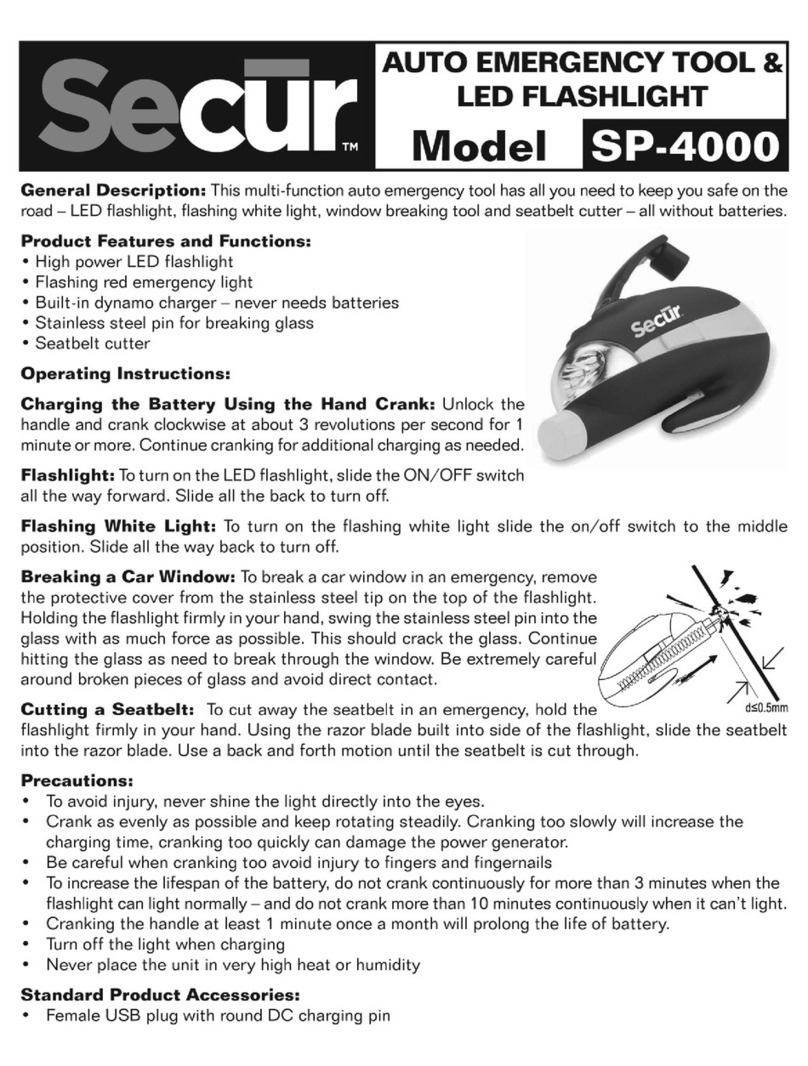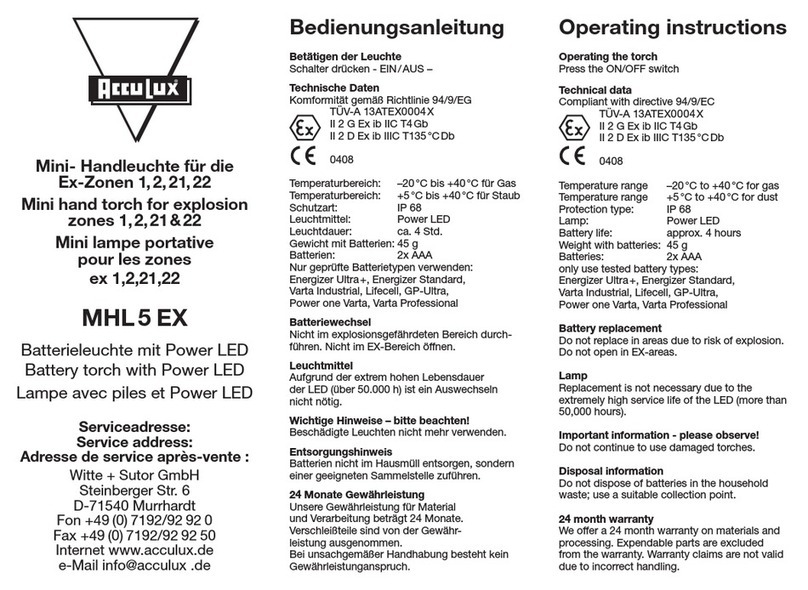Rofin Polilight Flare PLUS User manual

The brightest hand held battery operated
Forensic Light-source
USER GUIDE
Version 3.0

Polilight Flare Plus 2 manual – 1
TABLE OF CONTENTS
INTRODUCTION AND SAFETY STANDARDS ............................................ 3
INTRODUCTION ........................................................................................... 3
SKIN PROTECTION ....................................................................................... 3
EYE PROTECTION ......................................................................................... 3
DEFINITION OF SYMBOLS ......................................................................................... 4
Rofin Australia Pty Ltd ......................................................................................................................... 4
Declaration of Conformity .................................................................................................................. 4
STANDARD COMPONENTS ........................................................................................ 4
OPERATION .................................................................................................. 6
SWITCHING ON ............................................................................................................ 6
INTENSITY CONTROL .................................................................................................. 6
LOCKINGTHE FLARE+................................................................................................... 6
STROBING SELECTION ................................................................................................ 6
SOS MORSE CODE ...................................................................................................... 6
CONTINUOUS DRIVE ................................................................................................... 6
SHORT-PASS FILTERS .................................................................................................. 7
DIFFUSER FILTER INSERTION ..................................................................................... 7
FILTER INSERTION ....................................................................................................... 7
CHARGING ................................................................................................................... 7
Auto Charging (DC Charging) ............................................................................................................. 7
Mains Charger (AC Charging) ............................................................................................................ 8
Tripod Mount ....................................................................................................................................... 9
Decontamination of Flare+2 after use at a scene of crime ................................................................ 9
LIGHT APPLICATIONS ................................................................................ 10
INTRODUCTION .......................................................................................................... 10
FLUORESCENCE IMAGING ....................................................................................... 11
REFLECTION IMAGING .............................................................................................. 11
Specular Reflection ........................................................................................................................... 11
Diffused Reflection ............................................................................................................................ 11
ABSORPTION IMAGING ........................................................................................... 12
Differential Absorption ...................................................................................................................... 12
APPLICATIONS AT SCENE OF CRIME ...................................................................... 13
Shoe Prints ......................................................................................................................................... 13
General Fluorescent Method ............................................................................................................ 13
Blood Marks ....................................................................................................................................... 14

Polilight Flare Plus 2 manual – 2
TABLE OF CONTENTS
SEARCHING FOR LATENT FINGERPRINTS ............................................................. 15
Option 1: Absorption or Reflection Mode ....................................................................................... 15
Option 2: Inherent Fluorescent Mode ............................................................................................. 15
Option 3: Treatment with Powders .................................................................................................. 15
Option 4: Superglue Fuming ........................................................................................................... 16
OPTIONAL ACCESSORIES ........................................................................ 18
INTRODUCTION ......................................................................................................... 18
OPTIONAL WAVELENGTH UNITS HEADS INCLUDING INFRA-RED OPERATION .. 18
BAND PASS AND LONG PASS FILTERS ................................................................... 19
BEAM SHAPING FILTERS ......................................................................................... 19
CONE ALTERINGTYPE ...................................................................................................................... 19
SLIT FORMING ................................................................................................................................... 19
MAINTENANCE .......................................................................................... 20
INTRODUCTION ......................................................................................................... 20
CLEANING .................................................................................................................. 20
SPECIFICATIONS AND DEFINITIONS ....................................................... 21
INPUT POWER ........................................................................................................... 21
WEIGHT SPECIFICATION .......................................................................................... 21
DIMENSIONS ............................................................................................................. 21
LIGHT OUTPUT .......................................................................................................... 21
BATTERY LIFE ............................................................................................................ 21
WATERPROOF ............................................................................................................ 21
OPTICAL OUTPUT BANDS ....................................................................................... 22
AVAILABLE FILTERS .................................................................................................. 22
ACRONYMS AND ABBREVIATIONS ......................................................... 23

Polilight Flare Plus 2 manual – 3
INTRODUCTION
The Polilight Flare PLUS 2 ( Flare+2 ) is a battery driven, multiple array “state of the art” Light Emitting
Diode (LED) forensic light-source with a variety of filtered light outputs (patent pending). It has been
specifically designed to assist the forensic scientist to efficiently carry out an examination at the scene-
of-crime.
The Flare+2 produces powerful narrow bands of light at centre wavelengths of 365, 415, 450, 505, 530,
545, 620 nm and 850nm in addition to white light.The 415,450, 505, 530 and 545nm, units are fitted
with very deep rejection short-pass filters which give 10-6 rejection of stray light outside the band.This
is particularly important for visualizing weak fluorescent evidence.The intensity and beam profile of the
output can be varied to suit the application.The beam profile (normally a 5 degree divergent beam) is
varied using a set of diffusion filters giving an extra divergence of 5, 20 and 50 beam cone or a line of
light using the 60 x 1 degree filters.
Each output head has its own battery supply with inbuilt battery charge status indicator.The battery is
charged in one of four charger cradles fitter in the carrying case using either the mains supply power
unit or from the vehicle battery using the cable provided.
The Flare+2 is waterproof and can be used down to depths of more than 100 meters (300ft) of water.
However the optics of the UV head are NOT waterproof but are water resistant.The unit is controlled
using a Reed switch system incorporated in the collar at the base of the head.
SKIN PROTECTION
The Polilight Flare+2 is a high intensity light source, which if used inappropriately, may be a hazard to
the eyes and skin.
Take care to avoid direct exposure to the beam from theFlare+2. Appropriate clothing such as gloves
and long sleeved shirts should be worn at all times when working with or near the unit .The maximum
intermittent direct beam skin exposure must not exceed 20 minutes per day, while the maximum
continuous direct skin exposure must be less than 10 minutes per day. In normal use during an 8 hour
working day the light source is not hazardous since the light is directed away from the user.
EYE PROTECTION
Four pairs of safety goggles, each a different colour, are supplied with the Flare+2.The appropriate goggles
are to be worn by the operator and all people within 15 metres of a working Polilight Flare+2 unit.
Figure 1 shows an example of the goggles.
Figure 1. Goggles
INTRODUCTION AND SAFETY STANDARDS

Polilight Flare Plus 2 manual – 4
DEFINITION OF SYMBOLS
Blue Round symbol: Eye Protection
Must Be Warn in this area
YellowTriangle Symbol:
Caution – High Intensity Light
MANUFACTURER DETAILS
Rofin Australia Pty Ltd
Address: 6/42 – 44 Garden Boulevard, Dingley, Victoria 3172, Australia
Phone: +61 3 9558 0344
Fax: +61 3 9558 0252
E-mail: [email protected]
Declaration of Conformity
Rofin declares that the product Polilight®Flare+2 is CE compliant.
STANDARD COMPONENTS
The Polilight Flare+2 you receive will be made up of all or some of the components from the list below:
FLARE+2 UNITS
Choose from the following:
UV / 365, 415, 450, 505, 530, 545, 620, white. (IR 850 + 940nm available upon request)
The color of the head indicates the output light color.The number on each head indicates the centre
wavelength of the light output.
MAINS CHARGER (AC CHARGER) CABLE –
BATTERY TO PSU POWER CABLE
For connection to mains 110 / 240V
AUTO CAR CHARGER
For connection to vehicle 12V outlet
INTRODUCTION AND SAFETY STANDARDS

Polilight Flare Plus 2 manual – 5
INTRODUCTION AND SAFETY STANDARDS
The following components are standard with the eight head Polilight Flare+2 light source kit and
should be included with your system:
•8 x Polilight Flare+2 light sources
UV/ 365, 415, 450, 505, 530, 545, 620nm, (850nm option-
al) and white each with a fitted battery
•Goggles (Clear,Yellow, Orange and Red)
•Mains charger
•Auto charger with battery holder
•Carrying Case with charger cable and 4 charger
cradles cradles
•ball mount
•Beam profile Filters 5, 20, 50 and 60 x 1°
•Barrier filters (yellow, orange and red) (Optional)
•Instruction Manual
CHARGER – WITH INDICATOR
Which indicates the progress of charging with
orange or blue LEDs
BALL MOUNT
used to connect the unit to a tripod
BEAM SHAPING FILTERS
5°, 20°, 50° and 60 x 1°
GOGGLES

Polilight Flare Plus 2 manual – 6
OPERATION
The Polilight Flare+2 is operated using the Reed switch collar at the base of the head.
SWITCHING ON/OFF
1. Turn to the left and release turns the unit ON.
2. When ON -Turn to the left and release turns the unit OFF.
INTENSITY CONTROL
3 . When ON –Turn to the right and hold varies the output intensity in steps.
The intensity will continue cycling in 5 steps between 100%, to 35%, to 100%, as long as the switch is
turned to the right. When the intensity reaches 100% or 35% it remains the same for 3 steps to indicate
their location.
LOCKING THE FLARE+
4. Turn to the left and release four times within 3 seconds, locks the battery for air travel which can
be released by repeating the 4 turns to the left within 3 seconds.
STROBING SELECTION
The strobing feature increases the intensity above the 100% continuous value to 150%.This can
be used in forensic applications where both the background and the evidence fluoresce. In some
situations the contrast can be improved compared to continuous illumination.To select strobing:-
5. When ON –Turn to the left and hold selects strobing which continues until released.
SOS MORSE CODE
6. When ON - Turn to the right and release four times within 3 seconds initiates an SOS morse code
output.
CONTINUOUS DRIVE
The unique cooling vents (patent pending) allow the unit to operate continuously without dimming.
This means that you get maximum light out-put all the time.

Polilight Flare Plus 2 manual – 7
SHORT-PASS FILTERS
The color of the head depicts the output color of the head.The centre wavelength of the light output is
also printed on the head.
Special cut off (short pass) filters have been incorporated into the 415, 450, 505, 530 and 545 heads.
Since these heads are specifically used for a wide range of fluorescent applications it is essential to
remove the long spectral tail of the LED output at higher wavelengths produced by the LEDs, which
would normally reduce the intensity and observation of fluorescent trace evidence.The UV (365), and
RED head outputs have specifically narrow bands and do not require a short pass filter.
DIFFUSER FILTER INSERTION
A series of optional beam profile filters are available.To fit a Diffusion filter, simply slide theTAB of the
filter into the slot in the front ring and push the opposite side downward until it is held by the small
spring.To remove the Diffuser displace the retainer outwards to release the filter.There are 4 types of
Diffuser giving an extra divergence of 5, 20 and 50 degree beam cone or a line of light using the 60 x 1
degree filters.The number printed on the front of the filter holder is the divergence in degrees.
Inserting the diffusion filter
Releasing the diffusion filter
CHARGING
The carrying case has 4 charger cradles.The units inserted into the cradles can be charged using
either mains or car battery supplies.Two cables are provided, one for connection to the mains charger
and another for connection to a car battery outlet.The cradle indicates the progress of the charging,
illuminating orange when charging or Blue when charging is complete. Batteries retain their charge for
1 year when they are not in use.
Auto Charging (DC Charging)
Plug the auto charge connector into the car 12v plug.The battery reaches 80% charged after 1 hour and
then trickle charges to reach 100% after 2.5 hours. When the battery is charging, the ring on the charger
holder glows orange. When the battery is fully charged the ring glows blue. Remember that the battery
charges up faster than the discharge when the Flare+2 is in continuous full power operation. Different
coloured units drain the battery at various rates. (see time of use diagram below)
The UV head will run on full power for over 3.5 hours after the battery is fully charged. A quick charge
of only 10 minutes will give a run time of 10 to 15 minutes on full power.
OPERATION

Polilight Flare Plus 2 manual – 8
Mains Charger (AC Charging)
The operation of the AC charger is similar to that described above. Connect the AC unit to the carry
case (connected to the 4 battery charger cradles) and then plug the smart charger into the wall socket.
When the battery is charging the rim of the battery holder glows orange and when fully charged the
rim glows blue.
One of the benefits of the Lithium Ion Battery is that it allows you to use the unit after only partial
charging.You do not have to wait until it is fully charged to use the Flare+2.
Always keep the flashlight fully charged when not in use.This will prolong the overall battery life time.
The Li-ion battery’s chemistry is not able to survive longer periods without energy so if not charged
with a timely interval your batteries will get less efficient and the chemistry inside will eventually give
up. So therefore remember to fully recharge your flashlight before storing it for longer periods of time.
The self-discharge time is 1 years.The unit can be left in the charger cradle when it is fully charged (rim
glows blue).
Extended battery lifetime:The batteries can do a minimum of 300 FULL charges if handled correctly,
after 300 charges the output will decrease by 20%. After 500 charges the battery will only have 50% of
its original capacity and will need to be replaced.
Since the batteries and the charging is controlled by our intelligent inbuilt charging circuitry the lifetime
is maximized. With a daily use of 1-2 hours the batteries will last for many years. When the battery
needs to be replaced - it will be possible to refurbish it with a new one (you have to send the flashlight
to an authorized Servicepartner to get it refurbished).
Inbuilt Charging circuitry: Every individual flashlight has its own inbuilt charging circuitry which makes
it possible to charge the Flare+2 directly from the car when provided with 13.5 volt up to 18 volt (the
reason for using 13.5V as opposed to 12V is that we don’t want to drain vehicle battery unless the
generator is running).
40 pcs. of size AA batteries:The battery capacity that the Flare Plus holds is equal to approx. 40 units
of size AA batteries but we only use 1/3 of the space/volume for the same power output and 1/2 of the
weight. We pack in that amount of energy because we emit a lot of light and use a lot of energy.To
obtain that much power we use the latest technology from the computer laptop industry.The result is
low unit volume, high degree of battery safety, and small volume size compared to output.
All batteries can be transported by air without special permission, as the amount of lithium is below
the allowed equivalent lithium content according to the newTSA regulations on lithium batteries
(January 1, 2008). Also all Flare+2 batteries can be “locked”, so the light won’t be turned on by accident
during transport.
OPERATION

Polilight Flare Plus 2 manual – 9
Tripod Mount
The Ball mount provided is screwed into the tread located on head of the unit.The screw thread on the
Ball mount is used to attach the unit to a standardTripod mount.
Decontamination of Flare+2 after use at a scene of crime
To clean the Flare+2 use a Neutral detergent such as Liquinox, Alconox, Surgicleanse Neutral Detergent
or equivalent
These Neutral Detergents are powerful, low-foaming, non-ionic detergent for the rapid and efficient
removal of biological materials from sensitive clinical surfaces and instruments prior to disinfection.
The Battery is submersible in disinfectant such as CAVICIDE or equivalent.
The Head is submersible in disinfectant such as CAVICIDE or equivalent from base to below output
filter. Output filter wiped with CAVICIDE or equivalent.
Polilight Flare+2 Spectra
OPERATION
Half Peak
Color/Centre Wavelength Bandwidth
UV 365nm 360 – 385nm
Purple 415nm 405 – 420nm
Blue 450nm 435 – 465nm
Cyan 505nm 485 – 515nm
Green 530nm 510 – 545nm
Green/Yellow 545nm 530 – 560nm
Red 620nm 615 – 635nm
White 400 – 700nm
InfraRed 850nm 835 – 865nm

Polilight Flare Plus 2 manual – 10
INTRODUCTION
The Polilight Flare+2 produces powerful narrow bands of light at wavelengths between 350 nm and
670 nm.The various coloured heads of the Flare+2 have been selected to facilitate various forensic
applications.They are suitable for all fingerprint and other trace evidence detection techniques and can
be used in three different ways to detect and enhance forensic evidence:
Fluorescence (Photoluminescence) imaging.
Reflection imaging using specular and diffused reflection.
Absorption imaging.
FILTER
400 - 750 nm
365 nm
WHITE LIGHT BAND GENERAL SEARCHING,
FOOTPRINTS
GENERAL SEARCHING,
STAINS, FINGERPRINTS
ULTRAVIOLET BAND
415 nm BLOOD PRINTS, SPLATTER,
GUNSHOT RESIDUE
VIOLET (BLOOD FILTER)
450 nm GENERAL SEARCHING,
(SEMEN, UREA, FIBRES)
BLUE
505 nm SUPERGLUE AND NINHYDRIN
TREATED PRINTS
BLUE / GREEN
530 nm DFO TREATED PRINTS,
BACKGROUNG REDUCTION
GREEN
545 nm DFO TREATED PRINTS,
BACKGROUNG REDUCTION
GREEN / YELLOW
620 nm NINHYDRIN TREATMENTS,
BACKGROUND REDUCTION
ORANGE / RED
Figure 3. Polilight Flare+2 and Applications
LIGHT APPLICATIONS

Polilight Flare Plus 2 manual – 11
FLUORESCENCE IMAGING
Fluorescence occurs when a substance absorbs a specific band of light (energy), turns part of the
energy into heat and then transmits the remainder of the energy out as new light.This new light
has lower energy and hence a different colour when compared to the original illumination light.The
intensity or amount of fluorescent light is always small compared to the intensity of the original light.
Example 1: Fingerprints treated with fluorescence powders or chemicals will fluoresce under certain
lighting conditions.This enables very faint fingerprints which could not be photographed under normal
light, to be captured with high contrast under fluorescent lighting conditions.
In the example shown in Fig. 4, the view under daylight conditions is on the left and the view when
illuminated with 450 nm Flare+2 head viewed through BP530 is on the right.
Figure 4. Fluorescence
Example 2: A number of substances and materials fluoresce naturally without any chemical treatment.
Semen, urea, fibres, grease, lipstick, paper, gunshot residues and inks are examples of materials that
can naturally fluoresce and hence be located on other background material.
REFLECTION IMAGING
Specular Reflection
A surface appears shiny because of specular reflection.The surface acts like a mirror and light hitting
the surface is reflected away at the same incident angle.
Untreated fingerprints or shoe prints on shiny surfaces can often be seen when viewed from a suitable
angle, so that light reflection to the eye or camera from the background is significantly different to the
reflection from the latent print ridges. Images can be captured from a variety of shiny evidence such as
cups, glasses, cans and knives.
Example: Untreated fingerprints on glass illuminated with low angle white light. As the glass is highly
reflective, the fingerprint looks black as no light is reflected from it towards the eye. Alternatively when
the light is ancident at a low angle the fingerprint ridges scatter the light and they appear bright against
the background.
Diffused Reflection
Some surfaces and evidence will reflect light in a diffuse manner known as random scatter. If evidence has
different reflection characteristics to its background it can be resolved under specific lighting conditions.
Light from the background is reflected at different angles.The sample may appear lighter or darker
compared to the background when viewed from above, depending upon the relative difference in
diffused reflections from the surfaces.
LIGHT APPLICATIONS

Polilight Flare Plus 2 manual – 12
LIGHT APPLICATIONS
Example: Contact impressions such as shoe prints, can be made from dust or dirt being left on, or lifted
off, a flat surface. Usually side and low angle lighting with a white light produces the best results.The
Flare+2 has a special 60 x 1 degrees filter, used for enhancing shoeprints, that change the shape of the
beam from circular to a rectangular line of light. Position the Flare+2 head at an acute angle, with the
line of light across the surface.Try different colours according to the background colours.
ABSORPTION IMAGING
Differential Absorption
Materials can both reflect and absorb light. Certain materials are better absorbers of specific light
colours and better reflectors of other colours. Differential absorption is used to reduce background
interference when attempting to capture fingerprint images.
Example: After either chemical treatment or powdering, fingerprints on multicoloured backgrounds
may not be able to be fully photographed because of background interference. Colours in the
background can be eliminated through the use of differential absorption, whereby coloured lighting
matched to the background can eliminate the background interference.
superglue treated fingerprint on money box same fingerprint under green light

Polilight Flare Plus 2 manual – 13
LIGHT APPLICATIONS
APPLICATIONS AT SCENE OF CRIME
The following examples describe some methods of detecting latent fingerprints on various surfaces
using the Polilight Flare+2. Clearly, these are not the only ways in which the Flare+2 can be used and
experimentation is encouraged, especially when dealing with latent prints on unusual surfaces.
When working in the field, the composition of the absorbing substance in the latent print will be
unknown.This is determined by experimentation; varying the light from various heads systematically
through the whole wavelength range.
At the same time, the barrier filter (goggles) may need to be varied in order to help distinguish
between the fluorescence from the latent print and that derived from the object upon which the latent
print has been deposited.
Shoe Prints
Note
When searching a crime scene, one of the first things to look for is shoe prints.The
floor area must be protected against people at the scene introducing new footprints.
The Polilight Flare+2 can be used for the discovery of shoe prints and similar marks on flat surfaces
such as ceramic or plastic tiles, varnished wooden floors and shiny concrete. However, it cannot be
used on rough, porous or textile surfaces like carpets.
Using a very oblique angle, the powerful white light together with the 60 x 1 degrees filter, is the most
useful for this purpose, although it is recommended that all the Polilight bands be used for scanning,
until the right band shows the best results.
WARNING Amber goggles should be worn to protect the eyes.
General Fluorescent Method
Very rapid scanning for photoluminescence traces such as transferred fibres, paint, grease, semen and
vaginal fluid, sweat and urine can be achieved using the UV and 450 heads to scan the general area.
Light from the 450 nm blue head is recommended for general searching and the operator should wear the
amber goggles provided. If some fluorescence is found, the other bands should be checked in case better
photoluminescence can be induced in the sample or the luminescence of the background can be modified.
Sometimes it may be necessary to use barrier filters (545, 590 or 600 nm – optional extras) instead of,
or in addition to, the goggles to reduce the red luminescence background, which often passes through
the goggles.
The UV band together with the clear or yellow goggles, are also useful for general searching.
Example: Viewing an old couch under UV light and using clear goggles will often bring up stains and
fibres. Viewing the same couch under the 450 nm band using orange goggles can often bring up a
different set of stains and fibres not seen under the UV light.
This type of searching is best carried out at night or in a darkened room. In exposed situations,
screening of the exhibit from external light will help but is only likely to reveal strongly fluorescent
samples. After the preliminary searching, it is recommended that all mobile exhibits be taken to the
laboratory for more detailed inspection under totally dark conditions.

Polilight Flare Plus 2 manual – 14
LIGHT APPLICATIONS
Blood Marks
Although blood has a broad absorption spectrum, it only exhibits a single absorption maximum of
around 415 nm and does not display any photoluminescence properties.This means that blood marks
can only be detected directly using either the absorption or reflection mode.
In cases where the background surface bearing the blood marks is itself fluorescent, the latent marks
will not fluoresce while the rest of the exhibit will fluoresce. In this case the latent will often show
excellent contrast, typically a black mark against a bright yellow–orange field. Initial scanning should
be conducted using the 450 nm band for illumination with the operator wearing amber goggles. All
marks identified in the initial scanning should be further inspected using the full range of Polilight
Flare+2 bands to maximize detail.
Common fluorescent materials are varnishes, printing inks and fluorescent brighteners placed in paper
or clothing during manufacture.The latter materials usually absorb at the upper end of the UV range (280
to 360 nm) and emit in the blue region. If material bearing marks is not fluorescent, or only very weakly
fluorescent, scanning with the 415 nm band, which is compatible with the 415 nm blood absorption
maximum, can be undertaken. Blood marks look dark against a lighter background.
In the example shown in fig.5, the view under daylight conditions is on the left and the view when
illuminated with Polilight using a 415 nm light is on the right.
Figure 5. Bloody Fingerprints
WARNING Yellow goggles should be worn to protect the eyes.

Polilight Flare Plus 2 manual – 15
LIGHT APPLICATIONS
SEARCHING FOR LATENT FINGERPRINTS
Option 1: Absorption or Reflection Mode
Fingerprints contaminated with dust, dye, grease and blood or freshly deposited latent fingerprints on
highly polished surfaces like glass or metal, can be searched for using this mode.
A low angle white light is used and no treatment of the print is required.
Option 2: Inherent Fluorescent Mode
Latent fingerprints contaminated with fluorescent matter will show fluorescent properties and glow
under appropriate illumination (photoluminescence).
WARNING
Goggles are necessary for viewing this sort of latent fingerprint:
Use the 450 nm blue band and wear orange goggles for initial searching; then
Use the UV band and wear clear goggles.
Also 505 and 530 light with orange and red goggles should be tried.
When wearing the orange goggles, search for latent fingerprints which will glow. Any contaminated
fluorescent latent fingerprints should be readily detected using this mode. When working in daylight,
screening of the search area is essential. Once a latent fingerprint is located, it is recommended that it
be checked using the other Flare+2 bands to obtain optimum photoluminescence.
For photography, use 565 nm or 590 nm barrier filters (select the most appropriate) and if photography
is to be carried out in daylight, that area must be screened.
Option 3: Treatment with Powders
This step is an alternative to the superglue fuming described in Option 4: Superglue Fuming. It is up
to the fingerprint officers, drawing on their experience, to decide which method should be used. Both
steps are applicable to non- or semi-porous surfaces.
This manual provides general methods on how to approach a problem and so particular powders or
brand name powders have not been recommended. Experienced fingerprint officers will have their
own favourite powders and these should be used.
The following notes are useful as a guide:
Do not over-powder. Subsequent superglue development of latent fingerprints is only possible if there
is minimal powder on the ridges.
Fluorescent powder is of much higher sensitivity than normal powder. Only a very small amount of
fluorescent powder is needed on top of the ridge to produce excellent latent fingerprints, while the
same amount of conventional powder would be almost invisible.
On fluorescent surfaces, good results can be obtained with black, non-fluorescent powders or metal
powders.
On non-fluorescent or dark surfaces, white or silver powder can be effective if used in conjunction with
the strong white light from the Polilight. The angle of incidence of the white light should be varied to
obtain the best results.
On coloured surfaces, try to “remove” the colour by selecting a similar coloured band from the Polilight
Flare+2, then use black or silver powder to achieve the best contrast or use a fluorescent powder.

Polilight Flare Plus 2 manual – 16
LIGHT APPLICATIONS
Option 4: Superglue Fuming
An alternative to powder treatment is superglue fuming with Cyanoacrylate. In a serious crime, it
is recommended that the area of interest be sealed with a plastic tent for superglue fuming. After
superglue application, the area is searched for latent fingerprints using white light from Polilight on
low intensity. Very often blue 450 nm or green 530 nm bands offer good results.
In cases where the detected fingerprint is barely visible to the eye, enhancement of the superglue
developed latent should be carried out.This can be achieved using conventional powders or fluorescent
powders, remembering that fluorescent powders are of much greater sensitivity.
The best results are obtained using fluorescent stains such as rhodamine 6G, Basic yellow 40, Ardox
and RAM, provided that the material does not absorb the stain as well.
In the example shown in Figure 6, the view under daylight conditions is on the left and the view when
illuminated with Polilight ultraviolet (UV) or 450 nm and viewed through a 530 nm BP filter is on the right.
Figure 6. AdroxTreated Fingerprints
When rhodamine 6G is used for staining, the green 530 nm band is recommended, in conjunction with
amber goggles. For photographing, the 590 nm barrier filter is recommended, or you can use the blue
505 nm band with the 565 nm barrier filter.
In the example shown in Figure 7, the view under daylight conditions is on the left and the view when
illuminated with Polilight 505 viewed through a 565 nm filter is on the right.
Figure 7. RhodamineTreated Fingerprints

Polilight Flare Plus 2 manual – 17
Table 1 shows the settings needed for certain crime scene examinations.
Table 1 – Examination and recording conditions
Technique Mode Polilight Band Barrier Filter
Ninhydrin developed
fingerprints Absorption White light BP565
Ninhydrin developed
and cadmium post-
treated fingerprints
Absorption 505 nm Darkened room, no
barrier filter
Photoluminescence
(77K) 505 nm OG550 or BP590
Ninhydrin developed
and zinc post-treated
fingerprints
Absorption
490 nm or 505 nm
Darkened room no
barrier filter
Photoluminescence
(77K) OG550 or BP565
DFO developed
fingerprints Photoluminescence (RT)
545 nm BP600 or BP610
530 nm OG590 or BP590
505 nm OG550 or BP565
IND-Zn developed
fingerprints
Absorption White light BP530
Photoluminescence (RT) 505 nm OG550 or BP565
Cyanoacrylate
developed and
rhodamine 6G stained
fingermarks
Photoluminescence
530 nm OG590 or BP590
505 nm OG550 or BP565
Cyanoacrylate
developed and basic
yellow 40 stained
fingermarks
Photoluminescence 450 nm OG515, OG550 or
BP565
Blood stains (or
fingerprints in blood) Absorption
415 nm Dark conditions, no
barrier filter
415 nm or White Light BP415
850 nm Infra Red IR senstive Camera
Semen stains Photoluminescence
UV or 415 nm Yellow Goggles
440 or 450 or 505 nm Orange Goggles
530 nm Red Goggles
LIGHT APPLICATIONS

Polilight Flare Plus 2 manual – 18
INTRODUCTION
A number of optional accessories are available to allow the user to enhance the operation of the
Polilight Flare+2. These are:
• Optional wavelength heads including infra-red 850 and 940nm
• Barrier Filters
OPTIONAL WAVELENGTH UNITS HEADS INCLUDING INFRA-RED
OPERATION
Additional Flare+2 units can be purchased.These include wavelengths found in the Polilight PL500
(Infra-red wavelengths 850 and 940nm).
WARNING The IR is invisible to the naked eye. Extra care should be taken when using these
wavelengths.
Example of using IR with IR sensitive camera or night vision goggles
Figure 8 is of a dark jumper that under normal light shows a bullet hole but not much else. Under IR
850 nm light you can now see a blood stain which is the medium tone and a powder deposit which is
the dark tone.
Figure 8. Bloodstained Jumper
OPTIONAL ACCESSORIES

Polilight Flare Plus 2 manual – 19
BAND PASS AND LONG PASS FILTERS
Four additional band pass filters are available for photography while using the Polilight.These are:
In addition 3 Long Pass filters are available for photography while using the Polilight.These are:
a. OG 515
b. OG 550
c. OG 590
BEAM SHAPING FILTERS
Special filters are available which change the shape of the Flare+2 output beam. These filters are
attached to the front of the Flare+2 head. Available filters are:
CONE ALTERING TYPE
5, 20, 50 Degrees
Useful for evenly illuminating large areas.
SLIT FORMING
60 x 1 Degrees
Useful for illuminating surfaces to view shoeprints.
OPTIONAL ACCESSORIES
Table of contents
